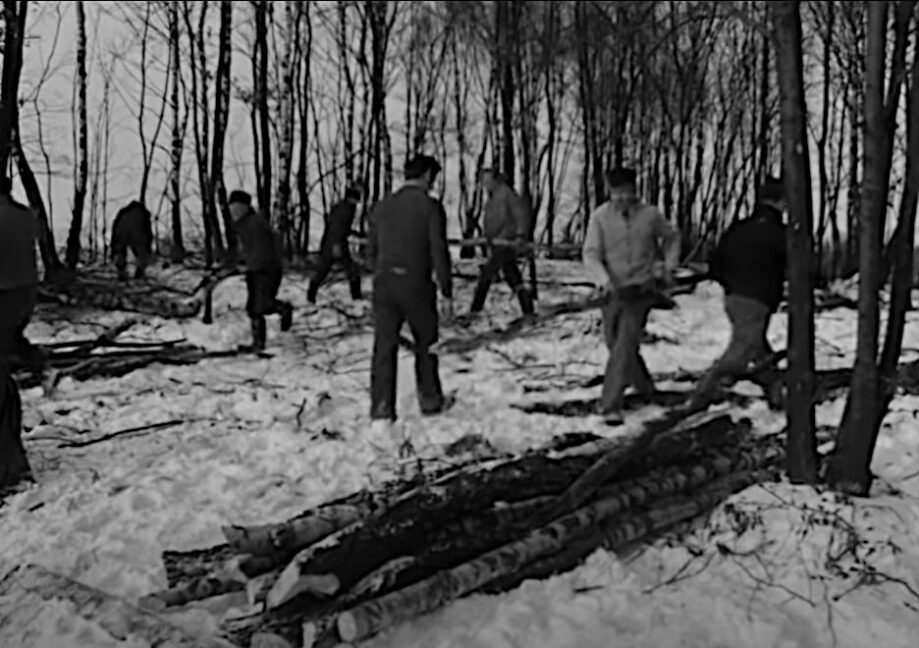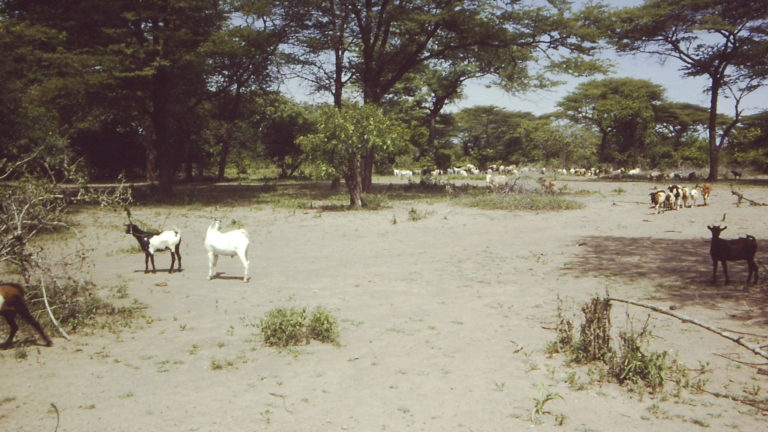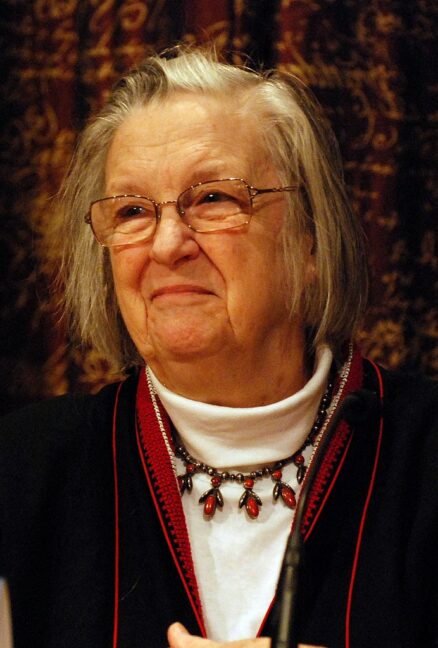by Martin Auer
The theory of the “tragedy of the commons” crops up again and again in the discussion about the climate catastrophe and the planetary crisis. According to her, commons are inevitably subject to overuse and decay. The political scientist and economist Elinor Ostrom has shown why this does not have to be the case and how resources can be used sustainably by self-organized communities, often over centuries.
Intelligent beings observing our planet would have to come to the conclusion that a terrible tragedy is taking place here: we Earth humans are destroying our planet. We knowthat we destroy him. We want to spend him not destroy. And yet it seems we cannot find a way to end the destruction.
A theoretical formulation of this phenomenon comes from the American ecologist Garrett Hardin (1915 to 2003). With his 1968 article “The Tragedy of the Commons“1 - in German: “The Tragedy of the Commons” or “The Tragedy of the Commons” - he created a household word that describes the process in which the actions of individuals lead to a result that no one wanted. In the article, Hardin tries to show that freely accessible common goods such as the atmosphere, the world's oceans, fishing grounds, forests or communal pastures are necessarily overused and ruined. He also takes the term “commons” or “commons” from the communal area, the pasture that was shared by a village. Such a shared pasture serves as an example.
The calculation goes something like this: 100 cows graze in a pasture. There are just enough for the pasture to regenerate every year. Ten of these cows are mine. “As a rational being,” says Hardin, “every cattle breeder strives to maximize his utility.” If I now send an eleventh cow to pasture instead of ten, the milk yield per cow will decrease by one percent because each cow now has less has eaten. My milk yield per cow also drops, but since I now have eleven cows instead of ten, my total milk yield increases by almost nine percent. So I would be stupid if I gave up the eleventh cow so as not to overload the pasture. And I would be even stupider if I watched other ranchers drive additional cows into the pasture and I was the only one who wanted to protect the pasture. The milk yield of my ten cows would be reduced and the others would have the advantage. So I would be punished for behaving responsibly.
All other ranchers must follow the same logic if they do not want to go under. And that is why it is as inevitable as fate in the Greek tragedy that the pasture will be overused and eventually become deserted.
The lichen, CC BY-SA 4.0, via Wikimedia Commons
The enemy of population growth
According to Hardin, there are only two options to prevent the tragedy: either regulation through a central administration or dividing the commons into private parcels. A rancher who graze his cows on his own land will be careful not to destroy his soil, the argument goes. “Either private enterprise or socialism,” he later put it. Most accounts of the “tragedy of the commons” end here. But it is good to know what further conclusions Hardin drew. These are arguments that crop up again and again in the debate about the climate catastrophe.
Hardin sees the real cause of overuse of resources in population growth. He uses the example of environmental pollution to demonstrate this: If a lone pioneer in the Wild West threw his waste into the nearest river, it wasn't a problem. When the population reaches a certain density, nature can no longer absorb our waste. But the privatization solution that Hardin believes works for livestock grazing does not work for rivers, oceans, or the atmosphere. They cannot be fenced in, the pollution spreads everywhere. Since he sees a direct connection between pollution and population density, Hardin's conclusion is: "Freedom to breed is intolerable."
Racism and ethno-nationalism
In a later 1974 article entitled “Life Boat Ethics: the Case against Helping the Poor“ (“Lifeboat ethics: plea against aid for the poor”)2 he makes it clear: food aid for poor countries only promotes population growth and thus exacerbates the problems of overuse and pollution. According to his metaphor, the population of rich countries is sitting in a lifeboat that can only carry a limited number of people. The boat is surrounded by desperate drowning people who want to get in. But letting them on board would mean everyone's downfall. As long as there is no world government that controls human reproduction, Hardin says, an ethic of sharing is not possible. “For the foreseeable future, our survival depends on allowing our actions to be guided by lifeboat ethics, however harsh they may be.”
Hardin wrote 27 books and authored 350 articles, many of which were openly racist and ethno-nationalist. Yet when Hardin's views are presented to the public, the white nationalism that informed his thinking is largely ignored. Discussions of his complete ideas can be found primarily on white supremacist websites. How the US organization SPLC writes, he is celebrated there as a hero.3
So does it have to end tragically? Do we have to choose between dictatorship and ruin?
The dispute over “central power” or “privatization” continues to this day. The American economist Elinor Ostrom (1933 to 2012) showed that there is a third possibility between the two poles. In 2009, she was the first woman to receive the Alfred Nobel Memorial Prize in Economics for her work4, in which she dealt intensively with the issues of the commons. The Nobel Committee's commendation said it demonstrated “how shared property can be successfully managed by user organizations.”
Beyond market and state
Photos: Proline server 2010, Wikipedia/Wikimedia Commons (cc-by-sa-3.0)
In her book “Governing the Commons”1990 (German: “The Constitution of the Commons – Beyond Market and State”), first published in 4, Ostrom put Hardin’s thesis about the tragedy of the commons to the test. She primarily examined practical examples of communities that have managed and used a resource sustainably over a long period of time, but also examples of the failure of such self-management. In the theoretical analysis, she used game theory to show that neither control by an external (state) power nor privatization guarantee optimal solutions for the sustainable use and long-term preservation of common goods.
In the first case, the state authority would have to have complete information about the characteristics of the resource and the behavior of the users in order to be able to correctly sanction harmful behavior. If their information is incomplete, their sanctions can only lead to misconduct again. The better and more precise the monitoring, the more expensive it becomes. These costs are usually ignored by advocates of state control.
Privatization, in turn, imposes costs on users for fencing and surveillance. In the case of a divided pasture, it may happen that the weather favors some areas while others suffer from drought. But the cattle breeders can no longer move to the fertile areas. This leads to overgrazing in dry areas. Next year the drought could hit other areas again. Buying fodder from fertile areas requires the establishment of new markets, which also incurs costs.
The third way
Both theoretically and empirically, Ostrom argues that there are other solutions between the market and the state. She examines case studies as diverse as community pastures and community forests in Switzerland and Japan, jointly managed irrigation systems in Spain and the Philippines, groundwater management in the USA, fishing grounds in Turkey, Sri Lanka and Canada. Some of the successful systems have enabled sustainable community management for centuries.
Ostrom finds in her case studies and also in laboratory experiments that not all users of a common good are equally “rational utility maximizers”. There are free riders who always act selfishly and never cooperate in decision-making situations. There are users who only cooperate if they can be sure that they will not be taken advantage of by free riders. There are those who are willing to seek cooperation in the hope that their trust will be reciprocated. And finally, there may also be a few real altruists who always look for the good of the community.
If some people manage to work together in a spirit of trust and thereby gain greater mutual benefit, others who observe this can be motivated to cooperate too. It is important that everyone can observe each other's behavior and also recognize the benefits of acting together. The key to overcoming the problems lies in communication and building trust.
What characterizes successful commons
More generally, Ostrom states that the sustainable sharing of a commons is more likely when the following conditions are met:
- There are clear rules about who is authorized to use it and who is not.
- The rules for appropriating and providing a resource correspond to local conditions. For example, different nets or fishing lines are permitted in different fishing grounds. Joint work in the forest or during the harvest is timed, etc.
- The users themselves set the rules and change them as needed. Since they are affected by the rules themselves, they can contribute their experiences.
- Compliance with the rules is monitored. In small groups, those involved can directly observe each other's behavior. Persons who monitor compliance with the rules are either users themselves or are appointed by the users and are accountable to them.
- Violations of the rules will be sanctioned. In most cases, first-time violations are treated leniently, repeated violations are treated more severely. The more certain those involved are that they are not being taken advantage of by free riders, the more likely they are to stick to the rules themselves. If someone is caught breaking the rules, his or her reputation will also suffer.
- Conflict resolution mechanisms are quick, inexpensive and direct, such as local meetings or a user-appointed arbitration tribunal.
- The state recognizes the right of users to determine their own rules. Experience shows that state interventions in traditional commons have often led to their deterioration.
- Embedded organizations: When a commons is closely linked to a large resource system, for example local irrigation systems with larger canals, governance structures at multiple levels are “nested” together. There is not just one administrative center.
Together in the felling
A traditional commons shows this Video about a “forest neighborhood” in Bladersbach, North Rhine-Westphalia, whose roots go back to the 16th century.

A community's undivided forest ownership as an inherited forest is characteristic of forest neighborhoods. The ancestral families use it jointly. Firewood is cut in winter. The elected “deputies” release part of the forest for logging every year. This part is divided according to the number of families. The boundaries of the “locations” are marked by the hammering of thick branches, each of which has a number carved on it. When the measurement is completed, the individual forest sections are raffled off among the families. The owners of the neighboring areas then mark the boundaries of their areas together from the boundary posts.
Until the 1960s, the oak trees in this mixed forest were used to produce tanner's lode. The work of peeling the bark took place in the spring. In winter, birch, hornbeam and alder trees could be felled. In an earlier phase, the forest areas were not raffled off, but the forest neighbors did the work together and later raffled off the firewood stacks. The forest is a “cop forest”. The shoots of deciduous trees grow back from the rootstock. After 28 to 35 years, the medium-strong trunks must be cut down, otherwise the roots are too old to form new shoots. The rotating use allows the forest to regenerate again and again.
But commons do not have to be just traditional village communities. The next installment of this short series aims to introduce some of the commons that are working today, from Wikipedia to Cecosesola, a group of cooperatives in Ecuador that has been providing 50 families with affordable fruit and vegetables, health and funeral services for over 100.000 years.
Cover photo: Marymoor Park community garden, USA. King County Parks, CC BY-NC-ND
Footnotes:
1 Hardin, Garrett (1968): The Tragedy of the Commons. In: Science 162 (3859), pp. 1243–1248. Online: https://www.jstor.org/stable/1724745.
2 Hardin, Garrett (1974): Lifeboat Ethics_ the Case Against Helping the Poor. In: Psychology Today (8), pp. 38–43. On-line: https://rintintin.colorado.edu/~vancecd/phil1100/Hardin.pdf
3 Cf. https://www.splcenter.org/fighting-hate/extremist-files/individual/garrett-hardin
4 Ostrom, Elinor (2015): Governing the Commons. Cambridge: Cambridge University Press. The book was first published in 1990.
This post was created by the Option Community. Join in and post your message!




